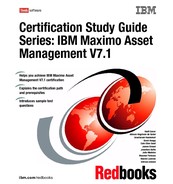198 Certification Study Guide Series: IBM Maximo Asset Management V7.1 10.6 Attached documents properties You may configure attached documents properties to meet your requirements. You might have to configure attached documents either in the System Properties application or the maximo. properties file. The attached documents properties are: mxe. doclink. doctypes. defpath This property is the default path for the doclinks folder on the application server computer where the physical documents that are attached to a system record are stored. mxe. doclink. path1 - mxe. doclink. path10 Use these to specify the HTTP server path ( from path1 to path10) to link documents that are attached to records. If you are configuring attached documents, you have to modify: The httpd. con file for the WebSphere application server The Web. xml for the WebLogic application server Refer to 10.12.5, “ Attached documents” on page 208. 10.7 Electronic audit signatures You can enable electronic signature and electronic audit records independently of each other. Typically, however, they are used together. The Electronic Auditing function writes audit records to the database tables when you modify an audited attribute. The Electronic Signature function records the person who made the modification After enabling electronic audit records for a database attribute, the process is: Each time a user adds, deletes, or modifies the value of an attribute using a system application, and then saves the change, an audit record is written to the audit object corresponding to the regular database object. The audit record includes: – Copy of the changed data – User name of the user who made the change – Identifier indicating whether the change was an insert, update, or delete
